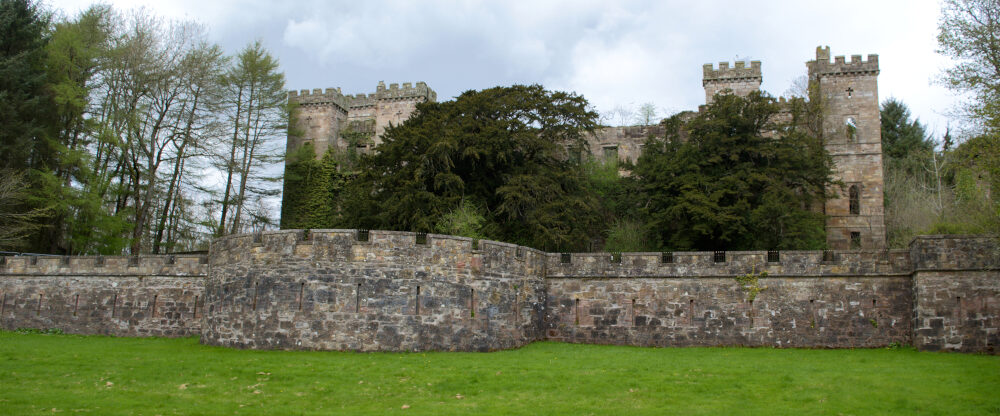Rothesay Castle is a prehistoric castle on the Isle of Bute in Scotland. It is currently in a ruinous state but is being preserved by Historic Environment Scotland.
Rothesay is the main town on the Isle of Bute, and the castle is easily within walking distance of the ferry terminal for the Wemyss Bay – Rothesay Ferry service. A trip to the castle would be worth a visit to Bute on its own.
The castle was built as a stronghold for the Stewart Family in the 1200s. Over the centuries, the castle has had its layout modified and amended. The castle follows a roughly round (oval) layout, with the gatehouse being added later in the 16th century.
Today, you can enter the main castle walls and see the layout of the various sections of the castle. Within the main gatehouse, there is also the grand hall.
Rothesay Castle played a role in the Scottish Wars of Independence. For a time, the castle fell into English hands but was taken by Robert the Bruce in 1311. It later fell back under English Control before being seized again by the Scots as Stewart gained the Scottish Throne in 1371.
The castle was the residence of King Robert II and Robert III.
The current castle layout and remains are largely due to the work of the 2nd Marquess of Bute, who employed men to clear the site and stabilise the structure in the 1800s. The 3rd Marquess of Bute continued with the work, and the building we see today was largely a result of his work.
Historic Environment Scotland continues to maintain and preserve the castle as a ruin, and this will ensure it remains open and accessible for generations to come.







